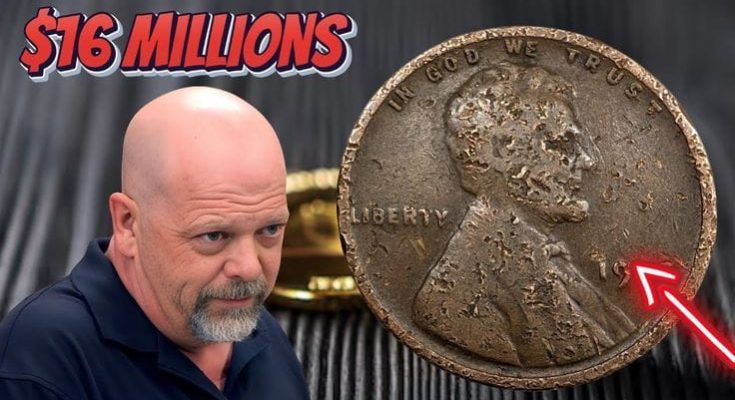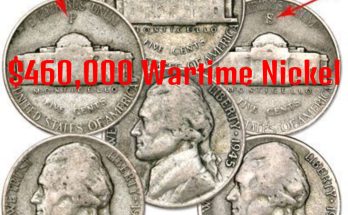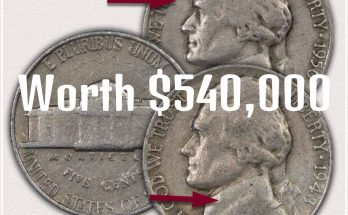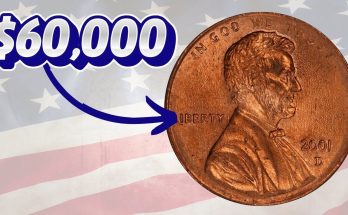Spoiler: No, your penny isn’t worth millions—but these hidden gems could be worth 1,000to1,000to1.7M! Here’s how to spot them.
The Myth vs. Reality
Every year, thousands of people fall for clickbait headlines like **“17MillionLincolnPennyFound!”∗∗—onlytodiscovertheircoinsareworthfacevalue.Thetruth?While∗noLincolnpennyhaseversoldfor17MillionLincolnPennyFound!”∗∗—onlytodiscovertheircoinsareworthfacevalue.Thetruth?While∗noLincolnpennyhaseversoldfor17 million*, a handful of rare errors and varieties have made collectors rich. This guide cuts through the hype and reveals 5 coins worth hunting for, complete with identification tips, historical backstories, and expert selling strategies.
Top 5 Rare Lincoln Pennies (2024 Updated Values)
1. 1943 Bronze Penny
- Value: 100,000–100,000–1.7 million (PCGS-certified examples).
- Why It’s Rare: During WWII, the U.S. Mint switched to steel pennies to save copper for the war effort. A few copper planchets (blanks) were accidentally struck, creating this legendary error.
- Key Features:
- Color: Copper-red (not silver).
- Weight: 3.11 grams (steel pennies weigh 2.7g).
- Magnet Test: Does not stick (steel pennies do).
- Famous Sale: A 1943 bronze cent graded MS-62 by PCGS sold for $1.7 million in 2021.
2. 1955 Double Die Obverse
- Value: 1,000–1,000–25,000+ (depending on grade).
- The Error: A misaligned die during minting caused ghost-like doubling on “LIBERTY,” the date, and Lincoln’s profile.
- How to Spot It:
- Use a 10x loupe to check for doubling on the obverse (front).
- Focus on the motto “IN GOD WE TRUST” and the date.
- Recent Sale: A 1955 Double Die graded MS-55 sold for $24,150 in 2023.
3. 1909-S VDB
- Value: 600–600–3,500 (circulated to uncirculated).
- History: The first Lincoln cent, designed by Victor D. Brenner (initials “VDB” on the reverse). The Mint removed the initials mid-1909 due to public backlash, making the “S” (San Francisco) mint mark + VDB combo rare.
- Key Features:
- Reverse: Tiny “VDB” at the base of the wheat stalks.
- Mint Mark: “S” below the date.
4. 1969-S Doubled Die
- Value: 25,000–25,000–50,000 (proof coins in MS 63+ condition).
- The Controversy: Only a few examples escaped the Mint, and rumors persist that most were melted.
- Identification:
- Obverse: Dramatic doubling on “LIBERTY” and Lincoln’s profile.
- Surface: Proof-like finish (mirror background).
5. 1972 Doubled Die
- Value: 200–200–1,000 (subtle doubling, common in lower grades).
- Why Collectors Care: A more accessible doubled die error for beginners.
- Tip: Look for doubling on “AMERICA” and the date.
How to Spot Fakes & Avoid Scams
Red Flags:
- “Too Perfect” Listings: Scammers often Photoshop doubling or mint marks.
- Pressure to Sell: Unsolicited buyers offering “$10,000 today only!”
- Fake Grading Slabs: Verify certification numbers on PCGS/NGC websites.
Tools You Need:
- 10x Loupe: For inspecting doubling and wear.
- Digital Scale: To confirm weight (e.g., 1943 bronze vs. steel).
- Magnet: Test 1943 pennies—real bronze won’t stick.
 How to Sell Your Rare Penny for Top Dollar
How to Sell Your Rare Penny for Top DollarStep 1: Get It Graded
- Why Grade? PCGS/NGC certification adds credibility and value.
- Cost: 30–30–100 per coin (worth it for pennies valued over $1,000).
Step 2: Choose the Right Platform
| Platform | Best For | Fee |
|---|---|---|
| Heritage Auctions | High-value coins ($1,000+) | 10–20% commission |
| eBay | Mid-range coins (200–200–5,000) | 13% + listing fee |
| Coin Shows | Networking with serious collectors | Table rental fees |
Step 3: Write a Killer Listing
- Keywords: “Rare 1943 Copper Penny PCGS Certified”
- Photos: Use natural light, macro shots of errors, and certification labels.
- Storytelling: Explain the coin’s history (e.g., “Accidentally struck during WWII!”).
The History Behind Lincoln Pennies
- 1909 Debut: The Lincoln cent replaced the Indian Head penny to honor Abraham Lincoln’s 100th birthday.
- Wheat Ears to Memorial: The original “wheat ears” design lasted until 1958, replaced by the Lincoln Memorial.
- Error Legacy: From the 1955 Double Die to the 1982 “No Mint Mark” rarity, errors have driven collector frenzy for decades.
Preservation: Protect Your Investment
- Storage: Use archival-quality flips or slab holders to prevent scratches.
- Environment: Store in a cool, dry place (humidity ruins surfaces).
- Never Clean: Even water can leave spots—collectors want original patina.
FAQ: Your Questions Answered
Q: “I found a 1943 penny that sticks to a magnet. Is it valuable?”
A: No—it’s a common steel penny worth 10–50 cents.
Q: “Can I sell an ungraded penny?”
A: Yes, but expect lower offers. Grading removes buyer doubts.
Q: “Where can I learn more about errors?”
A: Buy the “Cherrypickers’ Guide to Rare Die Varieties” or join r/coins on Reddit.
Take Action Now!
- Check Your Jar of Pennies: Focus on dates 1909–1974.
- Join a Community: Facebook groups like “Lincoln Cent Collectors” offer free advice.
#CoinCollecting #DebunkedMyths #TreasureHunting

PennyVerse.info – Where Knowledge Turns Pennies into Profit
No fairy tales. No hype. Just the rare coins that actually pay.
PS: That viral YouTube video? It’s likely a scam. Stick to PCGS CoinFacts for real data





